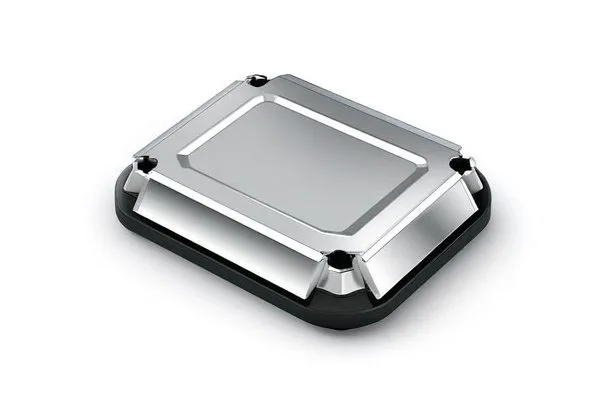In the pantheon of modern manufacturing processes, CNC milling stands tall like a sentinel, shaping the landscape of industries across the globe. It’s a game-changer, especially in the realm of machining stainless steel—a material renowned for its strength, versatility, and resistance to corrosion. But what exactly is it about CNC milling that is transforming the stainless steel machining scene, particularly in a manufacturing powerhouse like China? Join me on this exploration, and let’s uncover the fascinating world of CNC milling!
Table of Contents
Understanding CNC Milling
What is CNC Milling?
If we peel back the layers of manufacturing, at its core, CNC milling (Computer Numerical Control milling) involves the use of computers to control machine tools. Think of it as a maestro conducting an orchestra; every command is directed precisely to ensure a seamless performance. It’s a process where rotating cutting tools remove material from a workpiece.
How CNC Milling Works
Now, imagine entering a world where your ideas come alive as cutting-edge computer programs translate them into intricate designs. Through a series of coded commands, the CNC milling machine receives instructions, guiding the tool to cut and shape stainless steel according to specified parameters. Each movement is a dance of precision, where the machine performs intricate cuts with unparalleled accuracy.
The Significance of Stainless Steel in Manufacturing
Properties of Stainless Steel
Stainless steel is no ordinary material; it’s like the superhero of alloys. Known for its durability, resistance to corrosion, and aesthetic appeal, it comes in various grades, each tailored for specific applications. It’s tough enough to withstand the rigors of industrial use, yet versatile enough to be molded into intricate designs.
Why Choose Stainless Steel?
Why should manufacturers choose stainless steel over other materials? Imagine building a bridge with a material that rusts. Sounds absurd, right? Stainless steel offers reliability and sustainability, making it the go-to choice for everything from construction to kitchen ware. Its exceptional qualities, including easy maintenance and longevity, provide immense value in the long run.
The Game-Changer: CNC Milling for Stainless Steel
Benefits of CNC Milling for Stainless Steel Machining
Have you ever tried to carve a turkey with a butter knife? Frustrating, isn’t it? That’s the difference CNC milling brings to the table—precision, speed, and versatility. With CNC milling, manufacturers can process stainless steel parts at lightspeed without compromising on quality. Imagine a world where intricate designs can be produced in a fraction of the time, and that’s precisely what CNC milling delivers.
Among its many benefits, CNC milling ensures:

Precision and Accuracy: The Cornerstones of CNC Milling
Can you recall those jigsaw puzzles that seemed impossible to piece together? CNC milling eliminates that struggle. It provides a high degree of precision and accuracy that traditional machining methods often fail to achieve. Consider the emotionally satisfying experience of nailing that last puzzle piece; that’s what CNC milling accomplishes for stainless steel parts!
CNC Milling Process for Stainless Steel
Alright, now let’s delve deeper into the magic of CNC milling.
Step-by-Step Breakdown of the CNC Milling Process
Common CNC Milling Techniques for Stainless Steel
CNC milling isn’t a one-size-fits-all sedan; it encompasses various techniques tailored for different requirements. Here are a few commonly used methods:
The Impact of CNC Milling on Industries in China
Major Industries Benefitting from CNC Milling in China
It’s no secret that China has cemented its status as the manufacturing hub of the world. The adoption of CNC milling technology has empowered various sectors, enabling them to thrive. From automotive to aerospace, tell me, what industry wouldn’t want to benefit from enhanced precision and efficiency in their machining processes?
Case Studies: Success Stories from Chinese Manufacturers
Take a moment to reflect on the success stories emerging from the heart of China. One manufacturer, XYZ Steel Works, adopted CNC milling technology; their output increased by an astounding 40%, drastically reducing production time. This newfound efficiency enabled them to expand their operations and cater to international markets. It’s akin to discovering a hidden treasure chest that unlocks previously unimaginable possibilities!
Future Trends: What Lies Ahead for CNC Milling in China?
As we stand on the precipice of a new era in manufacturing, it’s thrilling to speculate on future trends.
Innovations in CNC Technology
Expect to see advancements in automation and AI-driven processes, creating smarter machines that learn and adapt for optimized efficiency. Think of it as teaching a puppy new tricks—it gets smarter and better over time!
Predictions for the Future of Stainless Steel Machining
As industries grow, the demand for more complex stainless steel designs will rise. The future lies in additive manufacturing, combining CNC milling with 3D printing to produce intricate structures that would have seemed like science fiction a decade ago. This melding of technologies is nothing short of revolutionary!
Conclusion: The Road Ahead
In the grand narrative of industrial manufacturing, CNC milling has carved its niche—an irreplaceable ally in the quest for quality, precision, and productivity. As we watch the waves of innovation continually reshape the landscape, one thing is clear: CNC milling is not just a trend; it’s a cornerstone of today’s manufacturing revolution.
So, are you ready to embrace the wonder of CNC milling? As industries shift and evolve, remember that this technology is here to stay, paving the path for a future where precision is the norm, not the exception. Let’s buckle up and enjoy the ride!





